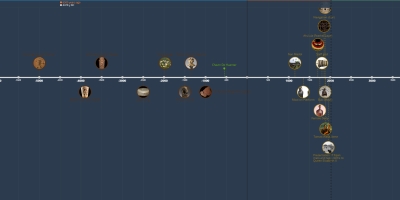jan 1, 2960 BC - Palette of King Narmer
Description:
3000-2920 BCEslate
Egypt
This palette is so valuable that it is never allowed to leave the country! It was found buried in the temple for the falcon god Horus. It is considered to be one of the most important artifacts from Egypt.
It’s low relief design shows imagery of King Narmer that has been difficult to interpret. The piece itself was commonly used during this time for grinding cosmetics, most likely eyeliner. Some believe that this may have been used during ceremonies.
Many votive objects like this were offered to the temples of the gods for offerings and connecting to the gods. Because of the number of donations, many objects would be buried in the temple.
Why is this art so important?
One of the very few palettes found in a controlled excavation
Its design characteristics are seen through egyptian art for the following three millennia such as the figures, use of registers, hierarchal scale to indicate importance of certain figures.
The regalia is commonly seen from this time all the way through the Roman era.
The king is seen twice in human form and possibly as in the form of a bull (pharaoh is often referred to as “Strong Bull”). His name is written in hieroglyphics on the palette.
Possible interpretations could be that it represents the unification of Upper and Lower Egypt OR the possibility of unification. The king is seen wearing both crowns. It could also represent the balance of order and chaos which is a fundamental element of the Egyptian ideals of the cosmos. Could be a representation of the daily journey of the sun god.
Red Crown vs. White Crown:
Red Crown (with curl, represents Lower Egypt). Shown with decapitated and castrated foes. Image of boat could reference the journey of the sun god on to the next life
White Crown (like a bowling pin, represents Upper Egypt) Crown refers to midday sun, shown grasping a foe.
Wearing both crowns could also be referencing the solar cycle and its importance to the daily life of a king.
After unification, king wore crowns together or separate when he was in that part of the country.
Added to timeline:
Date:
jan 1, 2960 BC
Now
~ 4989 years ago
